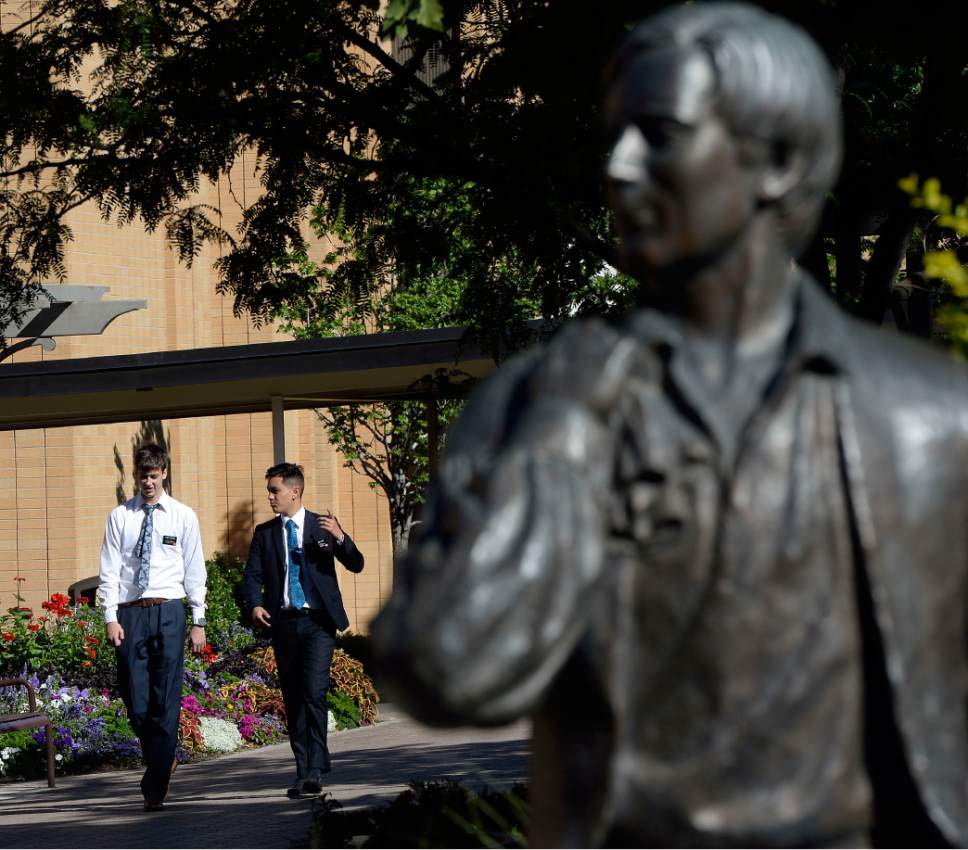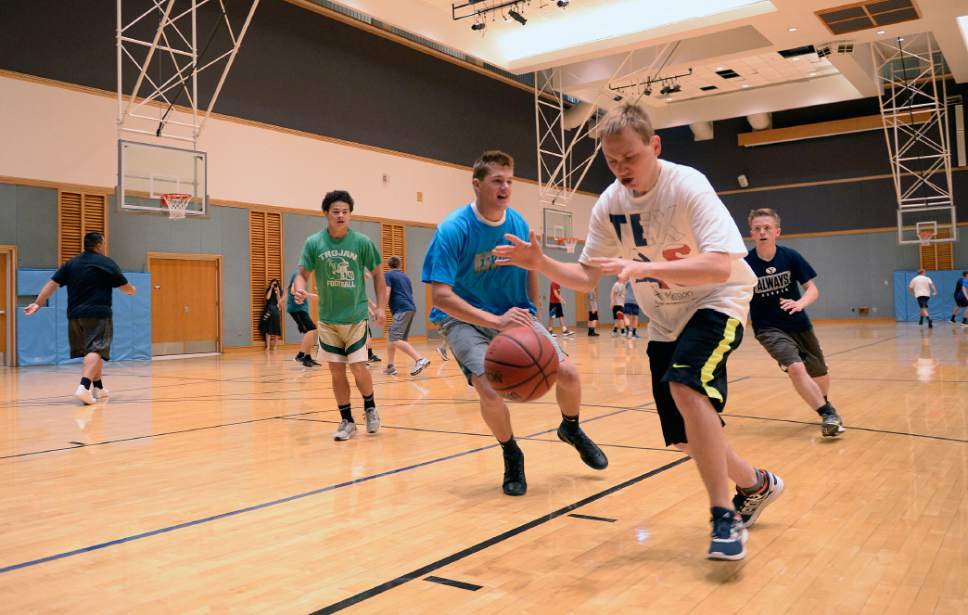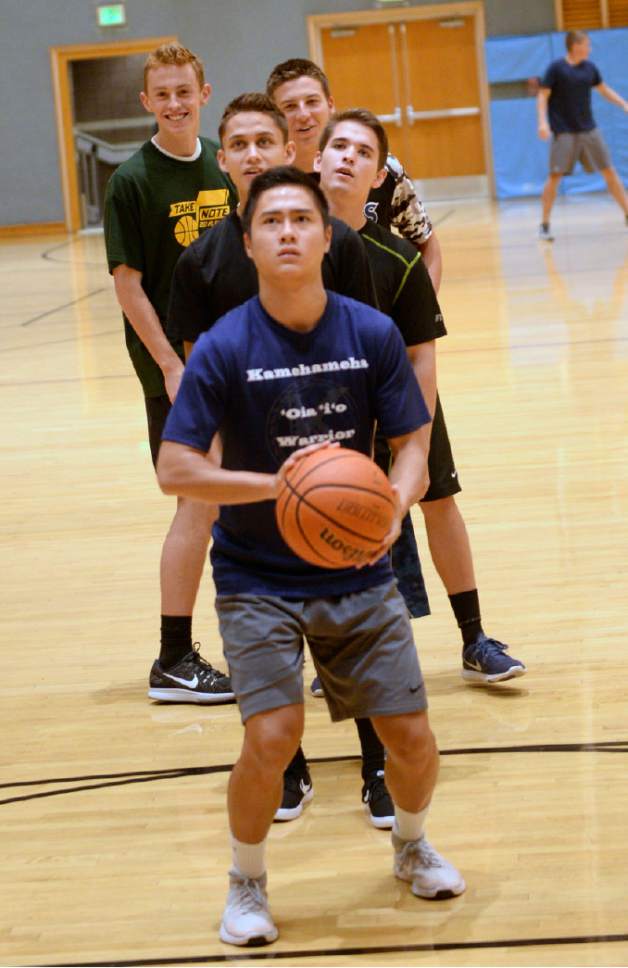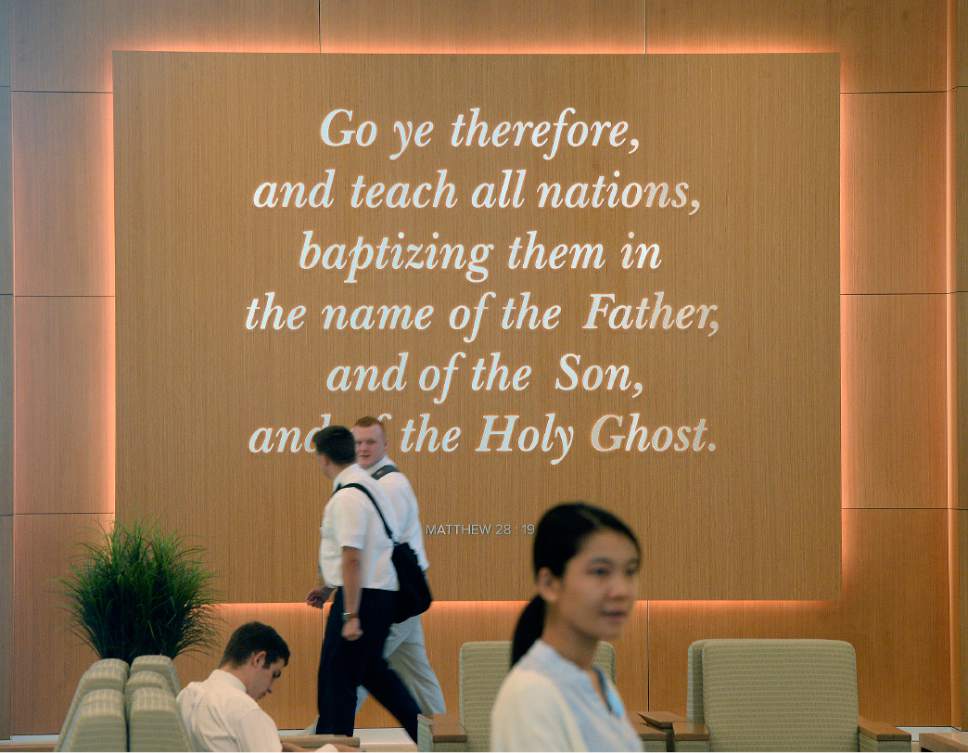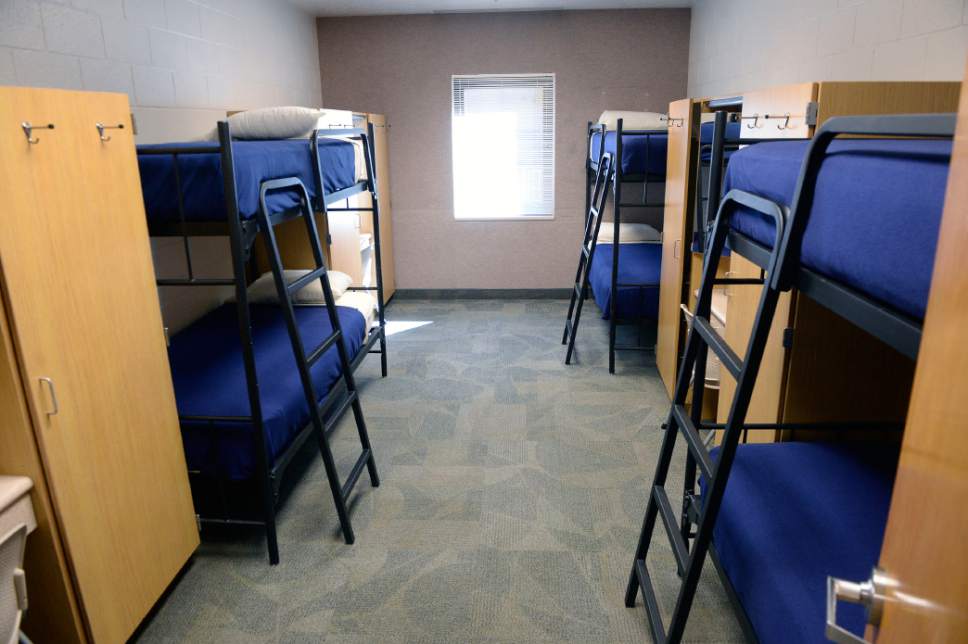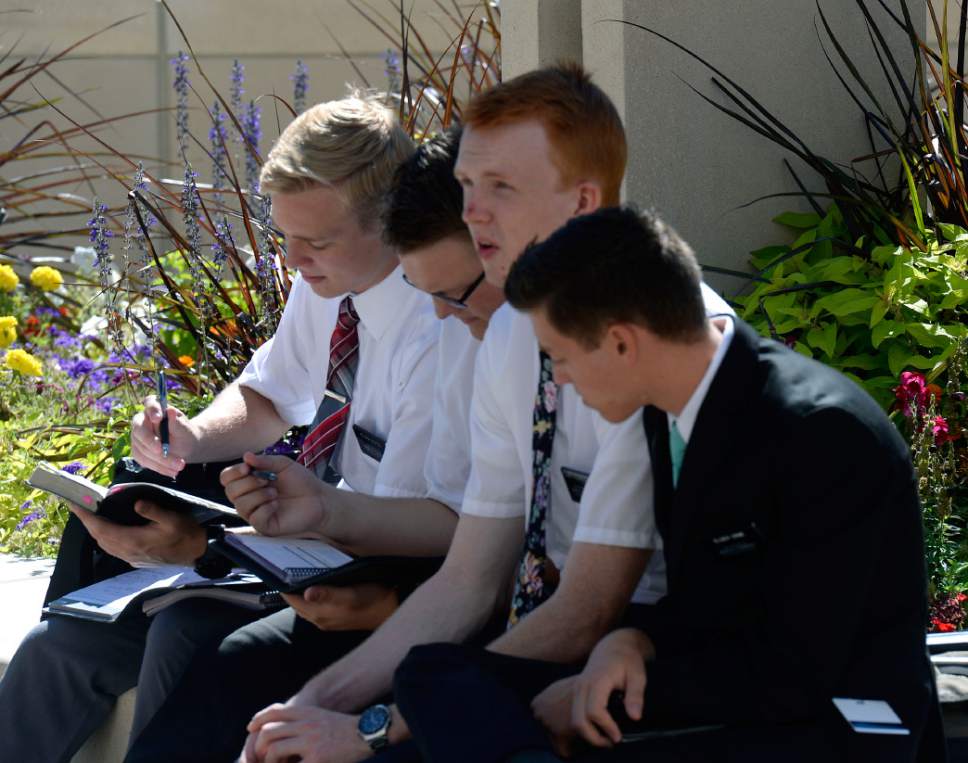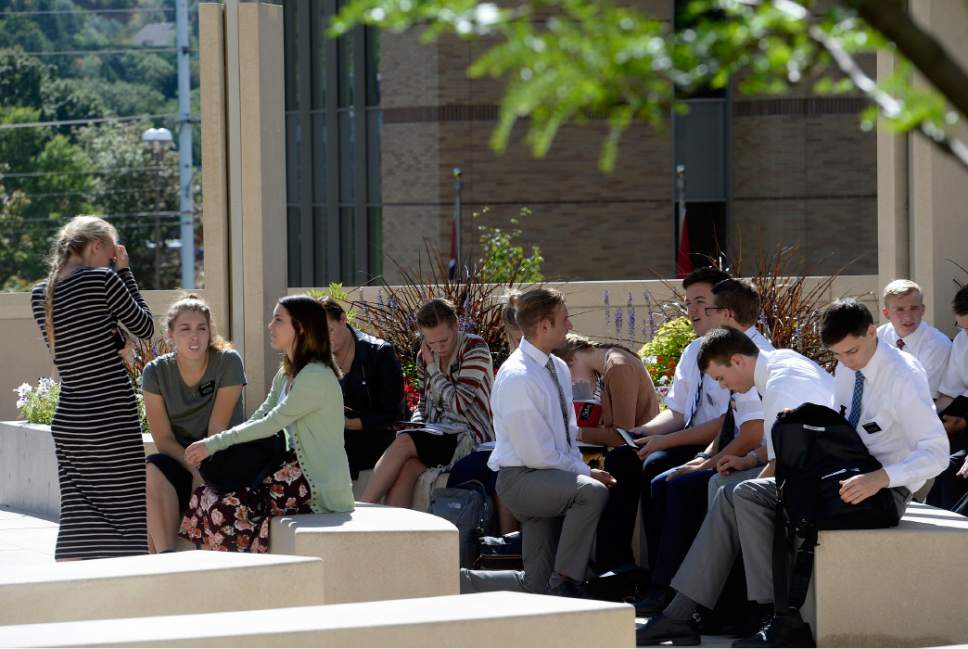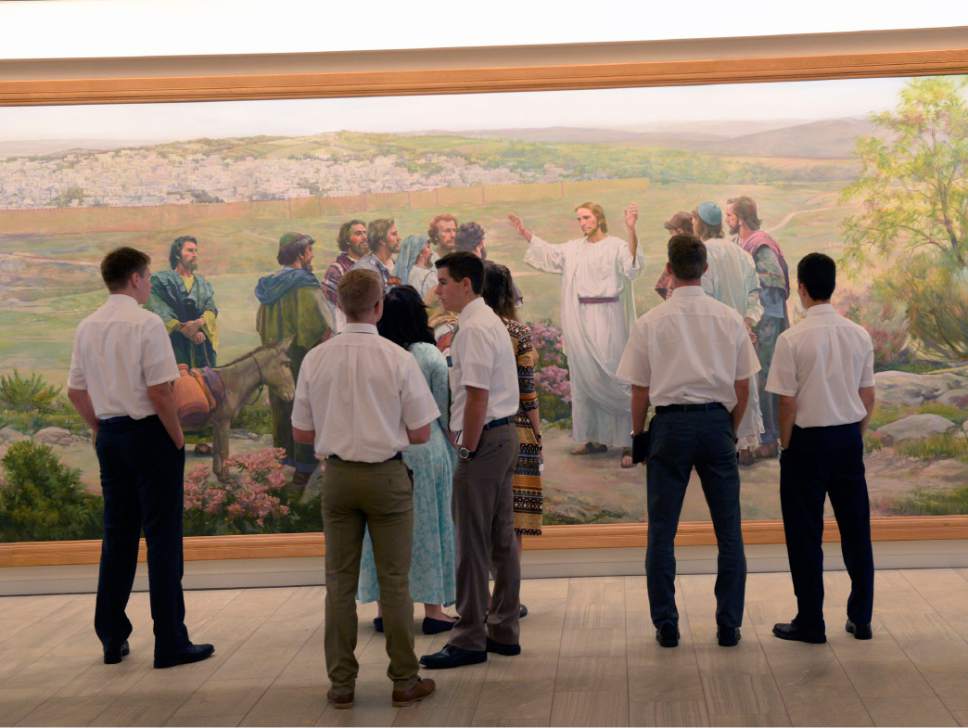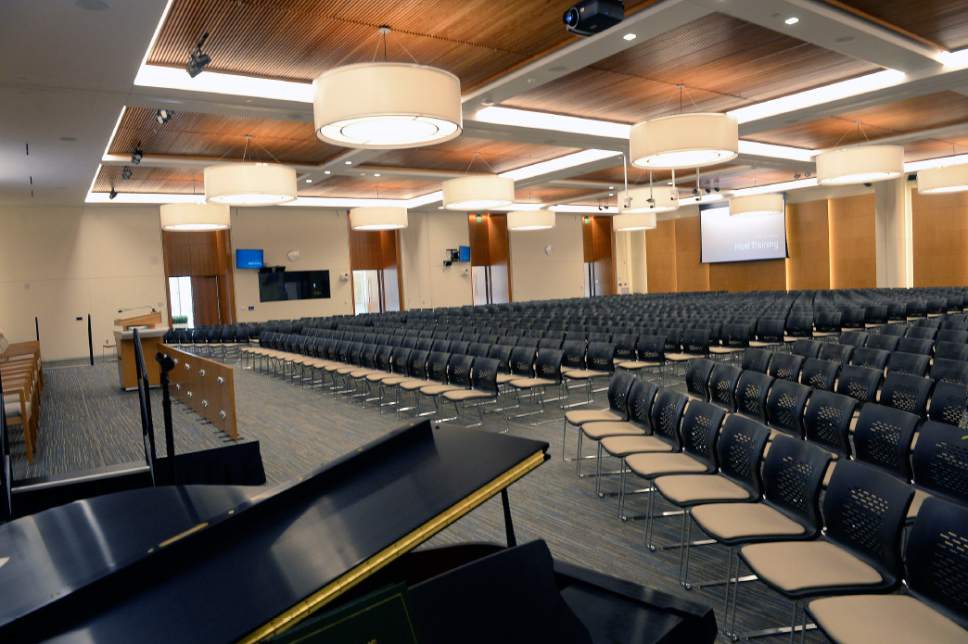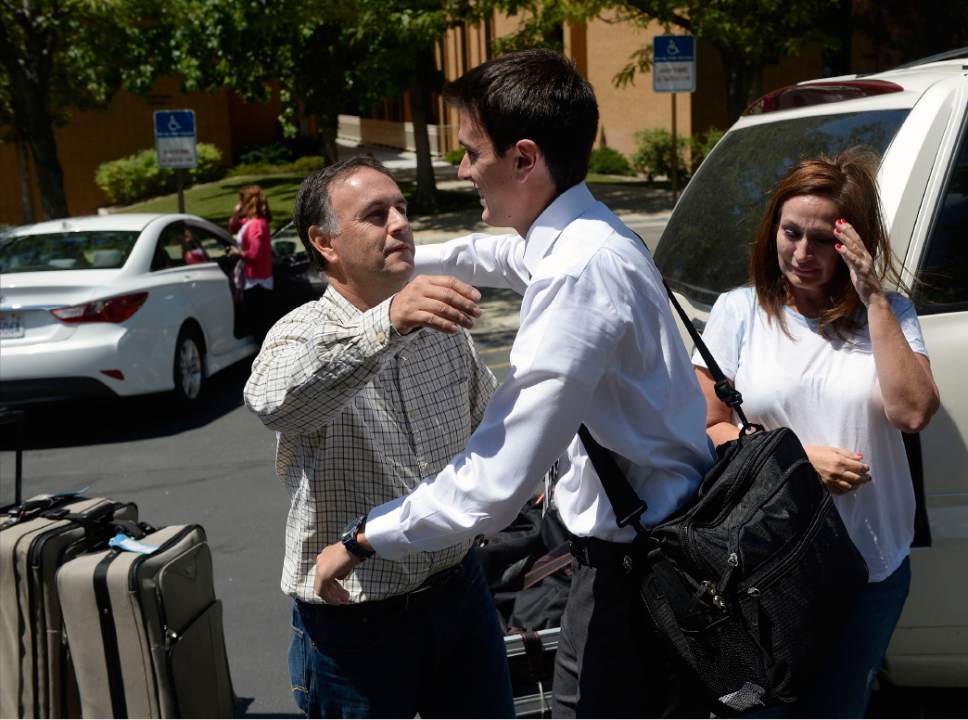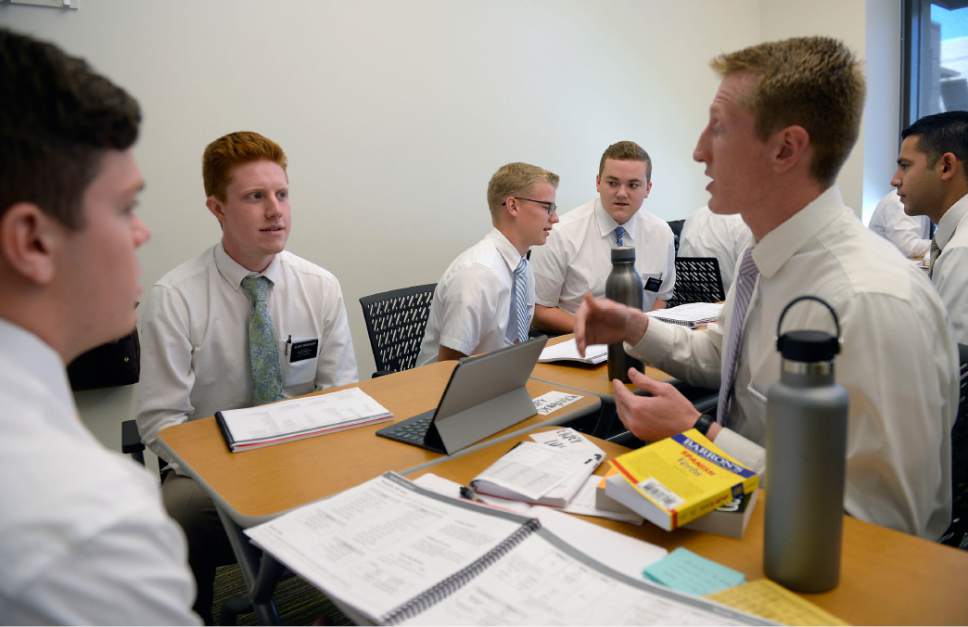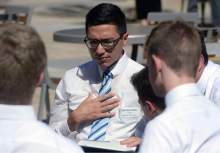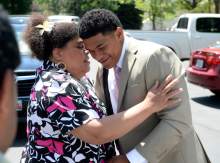This is an archived article that was published on sltrib.com in 2017, and information in the article may be outdated. It is provided only for personal research purposes and may not be reprinted.
Provo • To hear some veterans of the old Mormon Missionary Training Center tell it, their stints there were a bit like being in prison — little free time, a punishing schedule and lessons taught in cramped, windowless classrooms.
They might still remember the experience as transformative, even if the living spaces weren't.
Now come two newly constructed buildings that give an entirely different feel to the MTC look.
The six-story halls on the southern edge include 200 spacious classrooms along with more than 100 practice teaching rooms and 13 computer labs, which feature high ceilings, giant windows and natural light as well as "ponder spaces" — pools of water, a terrace, outdoor tables and velvety grass. Extensive glass exteriors provide stunning views of the nearby Wasatch Mountains.
All of that offers the look of an inviting U.S. college campus, except that the students travel in pairs, sport black name tags and often discuss sin and repentance in Spanish, Russian, German, French and other languages.
"Our hope is not to imprison our missionaries," said a grinning Gary L. Crittenden, managing director of the Utah-based church's missionary department Wednesday, "but to help them be receptive to the [Holy] Spirit and have a life-changing experience without being crammed into small spaces."
LDS officials continue to discover more about "how people [especially missionaries] learn," Crittenden said, and have inserted more spaces for "self-study and reflection."
The new structures were designed to "create opportunities for missionaries to think and to learn," said Kelly Mills, administrative director of the faith's 15 Missionary Training Centers around the world. "We want to entice missionaries outside."
Hallway walls are covered with murals of scripture stories — there's even one of Queen Esther from the Bible — and quotes such as "the worth of souls is great in the sight of God."
Flags from 139 countries are rotated onto poles that edge the campus, giving it a U.N. optic as the trainees stroll sidewalks to and from the cafeteria, laundry, residence halls and main office.
A large gym allows missionaries to get their required one hour of physical activity a day — but the rules make it clear that while "elders and sisters" (men and women) may play basketball together, they must guard only those of their own sex — so only man-to-man and woman-to-woman defenses are permitted.
The faith's flagship MTC, adjacent to LDS Church-owned Brigham Young University, was built in the 1970s to house about 2,300 missionaries. Since then, it has taught more than 600,000 missionaries from nearly every country. There, they learned scores of languages and went on to serve in hundreds of missions around the globe.
With the remodeling of residence halls to sleep six, rather than four, per room, the faith's flagship MTC now can train as many as 3,700 missionaries at a time. The four oldest buildings are expected to be razed at some point.
The Provo MTC educates about 20,000 Mormon missionaries a year — or half the church's total yearly tally, Mills said. The other half are trained at one of 14 other MTCs, with expansions also taking place at such centers in Mexico, Ghana and the Philippines.
Missionaries for The Church of Jesus Christ of Latter-day Saints spend two to nine weeks (depending on the mission destination) of intense language study and gospel grounding at MTCs. The facilities are akin to boot camps for these foot soldiers of Mormonism — "God's army," some call them — who then ship out for stations worldwide.
Expanding the Provo operation became urgent in 2012, when the Utah-based faith lowered the minimum age for males from 19 to 18 and for females from 21 to 19. The move triggered a dramatic surge in the number of missionary applicants, especially among young women.
These days, nearly 30 percent of the missionary force are "sisters," said Bonnie L. Oscarson, president of the church's Young Women organization.
Full-time missionary service now comes at a better time for these female proselytizers, she said, and they have embraced it with "great enthusiasm."
It has made a huge difference in their lives and in the system itself.
These sisters are serving in leadership positions in their respective missions, Oscarson said. They are participating on councils and sharing their opinions.
"It is teaching them to have a voice," she said.
An enlarged female presence at the MTC also may have prompted the inclusion of scriptural women to highlight in the art, Oscarson said, and other design elements.
Growing up in Utah County, Kyla Rogers watched the MTC construction and wondered if it would be completed by the time she entered for her own mission. It was.
"I'm here now and it's in use, and it's amazing," Rogers said in an LDS Church news release. "It has these huge open spaces. The classrooms have these beautiful, big windows. And all the colors and the murals — everything is just so visually appealing, and it's so nice to be here."
Rogers will be serving in the faith's Canada Calgary Mission.
"I really like the outdoors at this new facility," said Jacob Rees, a missionary from Atlanta, who will go to the Taiwan Taipei Mission. "There's one place in [particular] that I like to go to with my companion. It's on the terrace on one of the new buildings. It's just a green open area on top of a building, and we can always rely on [going there] to just feel really peaceful and to feel the Spirit."
Public tours of the MTC will begin Monday and last through Aug. 19. Free tickets can be secured at mtcopenhouse.lds.org. An additional 20,000 tickets were made available Wednesday.
pstack@sltrib.com Twitter: @religiongal



